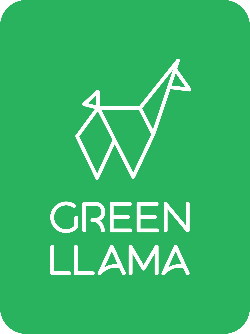Cleaning vs. Disinfecting: The Difference Matters for a Truly Healthy Home
by Kay Baker on Oct 09, 2025
Healthy Home Guides
Cleaning vs. Disinfecting: The Difference Matters for a Truly Healthy Home
Transparency note: This guide summarizes EPA/CDC definitions and publicly available programs for consumer education. It is not medical or legal advice.
When someone at home gets sick, many of us reach for the strongest spray we can find and “disinfect everything.” We use cleaning, sanitizing, and disinfecting as if they mean the same thing. They don’t — and the difference matters for health, cost, and the planet.
Understanding the terms lets you use the right tool for the right job — creating a safe home without overusing harsh chemicals. For a broader look at green cleaning, see our Ultimate Guide to Natural Cleaning Products.
Definitions that actually help (EPA/CDC)
Cleaning removes dirt and germs from surfaces — usually with soap/surfactants and water — which lowers the number of germs and the risk of spread. (CDC/EPA)
Sanitizing lowers certain germs to levels considered safe by public health standards. It’s used in food/contact contexts and typically targets bacteria. Clean first. (CDC/EPA)
Disinfecting uses chemicals to kill germs (bacteria and viruses) on surfaces. For best results, clean first, then apply an EPA-registered disinfectant for the full label contact time. (CDC/EPA)
Sources: EPA’s overview of disinfect, sanitize, and clean; CDC home guidance. See references below.
So… when should you disinfect?
In most homes, regular cleaning is enough for day-to-day messes. Bring out a disinfectant strategically for higher-risk situations, such as:
- Someone in the home is sick with a contagious illness (focus on high-touch points like knobs, switches, remotes).
- After preparing raw meat, poultry, or fish in the kitchen.
- When surfaces contact bodily fluids (e.g., blood, vomit).
CDC advises that sanitizing or disinfecting is generally not needed unless someone is sick or there’s a specific risk. See references.
Label Essentials: “Contact Time” (Keep it Wet!)
Disinfectants only work as labeled. Quick checklist:
- Pre-clean first. Dirt blocks disinfectants.
- Find the “contact time.” Keep the surface visibly wet for the full time (often 2–10 minutes).
- Use enough product. Don’t skimp — saturation matters.
- Air-dry if required. Some labels require letting it dry naturally.
- Right surface. Many labels specify hard, non-porous surfaces.
- Never mix products. Especially bleach + ammonia — dangerous gases can form.
- Ventilate. Open a window or run a fan where possible.
Tip: CDC resources often show contact time in simple infographics. Always follow your specific product label.
How to choose a “safer” disinfectant (when you need one)
- Check EPA registration (look for an EPA Reg. No.) and, for coronavirus, that it’s on List N.
- Consider the DfE mark (EPA’s Design for the Environment) on disinfectants reviewed against human health and environmental criteria. Learn more.
- Look for common “safer” actives in EPA-registered products, such as hydrogen peroxide, thymol, citric acid, or lactic acid — and always follow label contact times.
The Green Llama way: clean first, keep it simple
We’re clear about roles. Our All-Purpose and Bathroom Cleaners are master cleaners — plant-derived surfactants that lift away dirt, grime, and germs. For most daily needs, cleaning is what you need.
On the occasions you do need to disinfect, clean first with Green Llama, then apply an EPA-registered disinfectant for the full label time. That sequence lets the disinfectant work as intended.
Quick FAQs
How do I read a disinfectant label?
Find the EPA Reg. No., the organisms it’s approved to kill, the surface type (usually hard, non-porous), and the required contact time. Look for any pre-clean step and whether you must air-dry.
What does “contact time” actually mean?
The surface must stay visibly wet with the product for the full labeled time. Wiping it dry early can reduce effectiveness.
Can I clean and disinfect in one step?
Only if the label says it’s a one-step cleaner-disinfectant. Otherwise, clean first, then disinfect for the full contact time.
References
1) U.S. EPA — What’s the difference between disinfect, sanitize, and clean?.
2) CDC — When and how to clean and disinfect your home.
3) CDC — Cleaning and Disinfecting (WASH).
4) U.S. EPA — About List N & Registered Disinfectants.
5) U.S. EPA — DfE-Certified Disinfectants & Safer Choice.
Note: Vinegar is a cleaner but not an EPA-registered disinfectant and is not listed on EPA List N. Always follow your product’s label.
Trust & reader support
- 24-hour correction pledge: If you spot an error, we’ll review and update this article within 24 hours.
- Contact CX: hello@greenllamaclean.com





